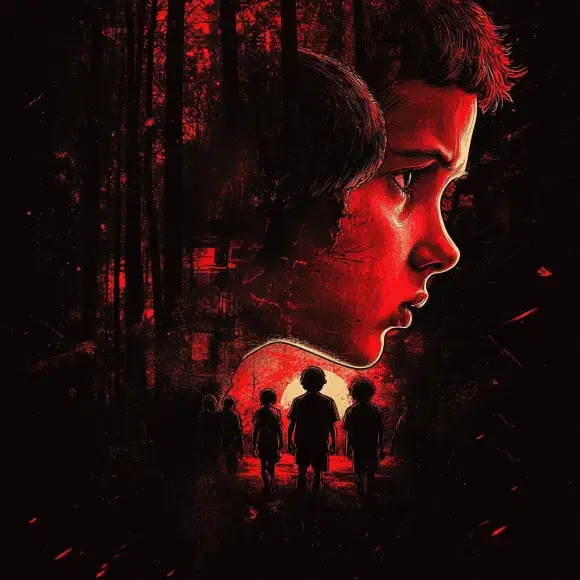The term “counterculture” has long been associated with movements that challenge the norms, defy the mainstream, and create alternative ways of living and thinking. From the beatniks of the 1950s to the hippies of the 1960s and the punk rockers of the 1970s, counterculture has been a driving force in shaping societal change and cultural identity. In the modern era, one of the most intriguing intersections of counterculture is found within the wildly popular Netflix series, Stranger Things. By blending 1980s nostalgia with a rebellious spirit, Stranger Things has become a symbol of modern counterculture, resonating with audiences who crave both a connection to the past and a push against the status quo.
The Legacy of Counterculture: A Brief Overview
Counterculture movements throughout history have often emerged in response to social, political, and cultural tensions. These movements reject the dominant values of their time, instead advocating for alternative lifestyles, ideologies, and artistic expressions. The beat generation, with its emphasis on jazz, poetry, and spontaneous creativity, set the stage for the countercultural explosion of the 1960s. The hippie movement, characterized by its anti-war stance, communal living, and psychedelic music, further solidified the power of counterculture to inspire change and challenge authority.
The 1970s and 1980s saw the rise of punk rock, a movement that rebelled against the polished and commercialized music of the time. Punk was raw, aggressive, and unapologetically anti-establishment, giving voice to a generation that felt disillusioned with the status quo. As the decades passed, counterculture continued to evolve, influencing everything from fashion to politics, and leaving an indelible mark on society.

Stranger Things: A Modern Countercultural Phenomenon
Stranger Things is much more than just a nostalgic trip back to the 1980s. It’s a series that taps into the essence of counterculture by blending elements of horror, science fiction, and coming-of-age drama with a deep reverence for the era’s pop culture. The show’s creators, the Duffer Brothers, have masterfully woven together a narrative that resonates with viewers of all ages, particularly those who lived through or are fascinated by the 1980s.
At its core, Stranger Things is about a group of misfit kids who find themselves up against powerful, unseen forces—both supernatural and governmental. This theme of ordinary people taking on extraordinary challenges is a hallmark of countercultural narratives. The show’s protagonists, with their love for Dungeons & Dragons, their outsider status, and their unwavering loyalty to one another, embody the spirit of counterculture. They reject the norms of their small town and stand united against the oppressive forces that seek to control and silence them.
The show also pays homage to the countercultural movements of the 1980s, particularly in its portrayal of characters like Eleven, who embodies the punk spirit with her shaved head, rebellious attitude, and outsider status. The use of music is another significant element, with the show’s soundtrack featuring iconic 1980s artists like The Clash, Joy Division, and The Cure—bands that themselves were central to the countercultural landscape of the time.
Nostalgia as a Countercultural Force
One of the most compelling aspects of Stranger Things is its use of nostalgia as a countercultural force. While nostalgia often evokes sentimental longing for the past, in Stranger Things, it’s used as a tool for subversion. The show’s nostalgic references to 1980s films, video games, and music are not just there for the sake of nostalgia; they serve to critique and reimagine the past in a way that speaks to contemporary audiences.
The resurgence of interest in 1980s pop culture, driven in part by Stranger Things, can be seen as a form of counterculture in itself. In an age of rapid technological advancement and constant connectivity, there’s a growing desire to return to a time when life seemed simpler, more tangible, and more human. This longing for the past is not just about escapism; it’s about reclaiming a sense of authenticity and individuality in a world that often feels increasingly homogenized and controlled.
The intersection of Stranger Things and counterculture is particularly evident in the way the show has influenced modern fashion, music, and media. The 1980s aesthetic—characterized by bold colors, oversized silhouettes, and DIY fashion—has made a significant comeback, thanks in large part to the show’s impact. Bands that draw inspiration from the synth-heavy sounds of the 1980s, such as Gunship and The Midnight, have gained popularity, further blurring the lines between past and present, mainstream and counterculture.
The Cultural Impact of Stranger Things
Stranger Things has done more than just entertain; it has sparked a cultural movement. The show’s blend of nostalgia, horror, and rebellion has resonated with audiences worldwide, inspiring everything from fan art and cosplay to fashion lines and themed events. It has also prompted discussions about the nature of nostalgia, the role of pop culture in shaping identity, and the ways in which counterculture continues to evolve in the digital age.
Moreover, Stranger Things has given rise to a new generation of countercultural heroes—characters who are flawed, complex, and relatable. These characters challenge traditional notions of heroism and offer a more inclusive and diverse representation of what it means to be a hero. In doing so, Stranger Things continues the countercultural tradition of pushing boundaries, questioning norms, and championing the underdog.
Conclusion
Stranger Things is more than just a TV show; it’s a cultural phenomenon that intersects with the long-standing tradition of counterculture. By blending 1980s nostalgia with a spirit of rebellion, the series has created a modern-day countercultural movement that resonates with audiences across generations. As we continue to navigate an increasingly complex and fast-paced world, the lessons of Stranger Things—the value of friendship, the power of individuality, and the importance of questioning authority—remain as relevant as ever.
Whether you’re a fan of the show, a lover of 1980s culture, or someone who identifies with the countercultural spirit, Stranger Things offers a rich and layered narrative that invites us all to embrace our inner misfit, stand up against the odds, and redefine what it means to be truly “strange” in today’s world




